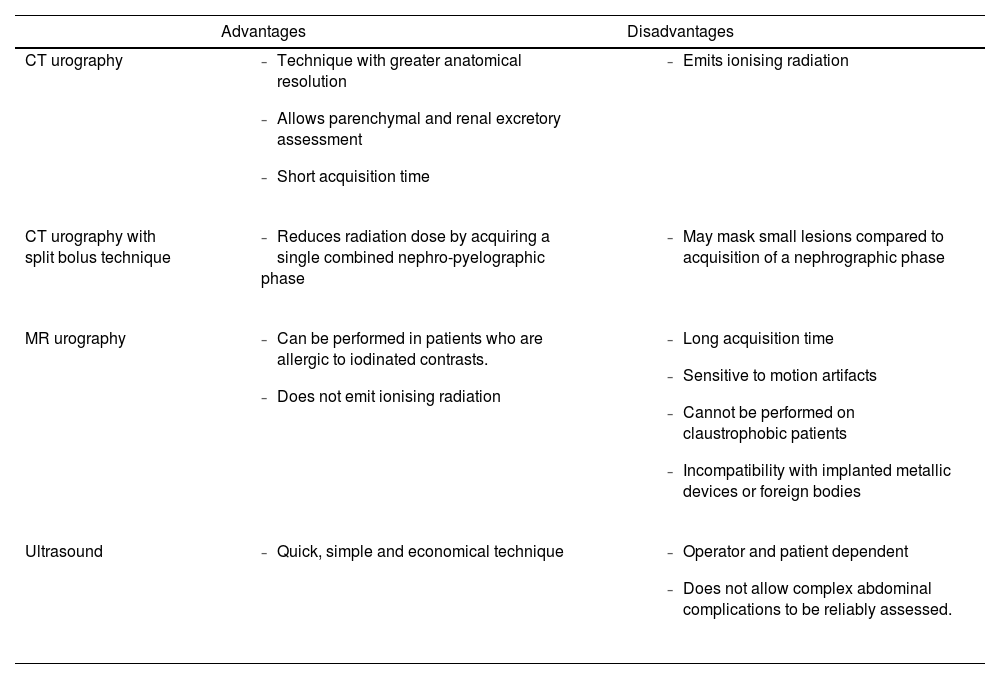To review the different types of urinary diversion surgeries (UDS) in order to recognize the expected findings in a postoperative study, using different imaging techniques. To recognize the main postoperative complications, both early and late.
ConclusionUDS are surgical procedures whose purpose is to redirect urine flow after cystectomy, generally in an oncologic context. The imaging evaluation of urological surgeries is often a radiological challenge, with CT being the most commonly used image modality. Therefore, it is essential to know the main surgical techniques, the expected postoperative findings and the optimization of imaging techniques for early diagnosis and correct evaluation of postoperative complications.
Revisar los diferentes tipos de cirugías derivativas urinarias (CDU) para reconocer los hallazgos esperables en un estudio postoperatorio mediante distintas pruebas de imagen. Revisar las principales complicaciones postquirúrgicas, tanto precoces como tardías.
ConclusiónLas CDU son procedimientos quirúrgicos cuya finalidad es redirigir el flujo de orina tras la realización de una cistectomía, generalmente en contexto oncológico. La evaluación en imagen de las cirugías urológicas supone, a menudo, un desafío radiológico, siendo la TC la modalidad de imagen más utilizada. Para ello, es fundamental el conocimiento de las principales técnicas quirúrgicas, de los hallazgos postoperatorios esperables y la optimización de las técnicas de imagen de cara al diagnóstico precoz y correcta evaluación de las complicaciones postoperatorias.























